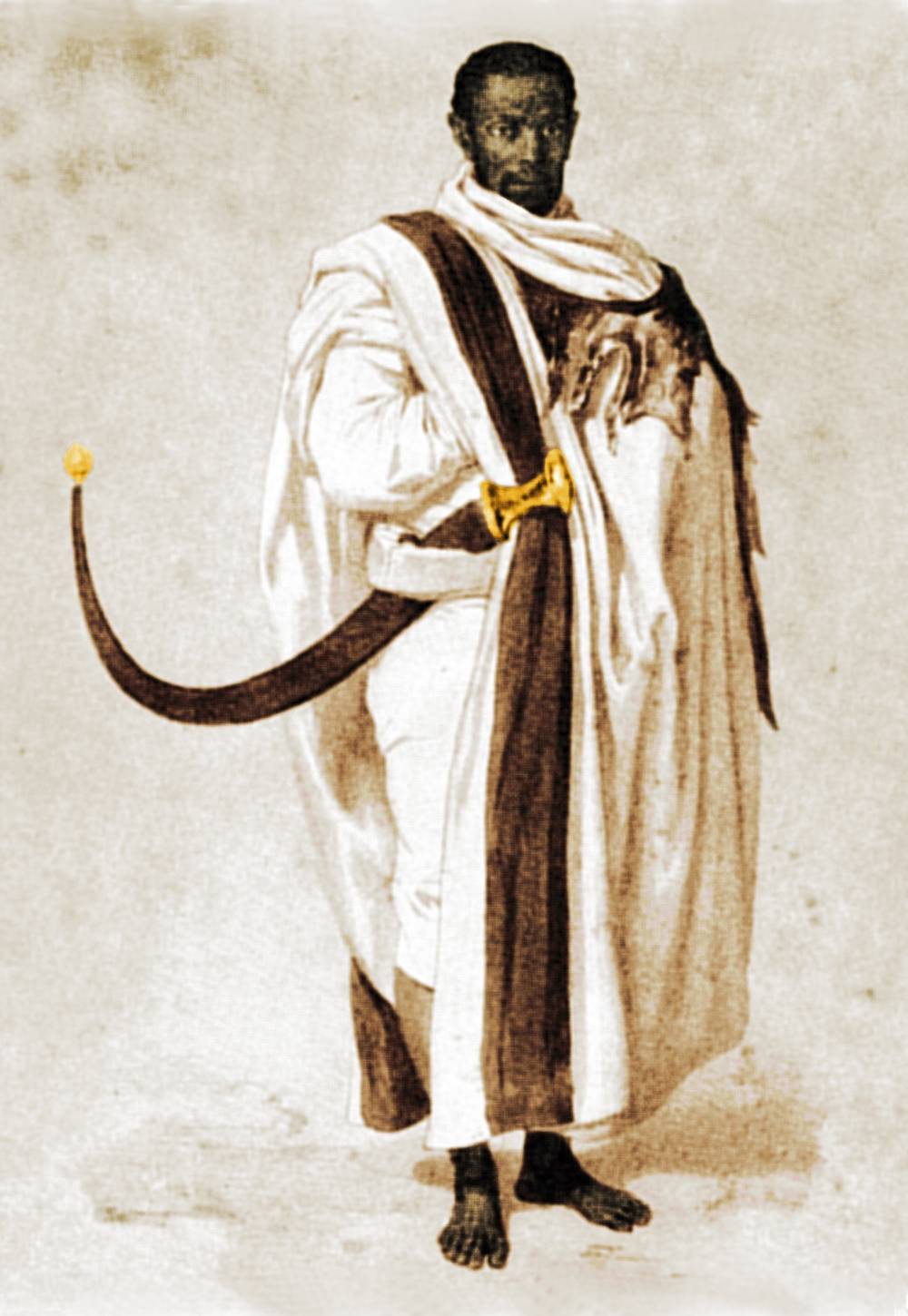The Shotel Sword is a curved blade originating from Ethiopia. It is known for its unique, sickle-like shape that curves almost into a full circle. This design allowed the wielder to reach around an opponent’s shield and stab or slash them from the side. The Shotel was a symbol of status and bravery, often associated with the Ethiopian warriors and nobility. Its use dates back to at least the 1st millennium AD and was a prominent weapon in the Horn of Africa for centuries.
Get your dose of History via Email
Historical Background of the Shotel Sword
The Shotel Sword has a rich history tied to the Ethiopian region. Its discovery is not attributed to a single individual, as it has been part of Ethiopian culture for centuries. The earliest known use of the Shotel dates back to ancient Ethiopia, where it was a weapon of choice for warriors. The Shotel’s design is a testament to the ingenuity of Ethiopian blacksmiths, who crafted it to be both a tool of war and a work of art.
Historically, the Shotel was not just a weapon but also a symbol of social status. It was often carried by members of the Ethiopian nobility and depicted in various historical records and artifacts. The Shotel’s effectiveness in battle was particularly noted during conflicts in the Horn of Africa. It played a significant role in the military tactics of Ethiopian warriors, who were skilled at using its unique shape to their advantage.

The Shotel Sword gained international recognition during the European colonial period. Foreign observers noted its distinctive shape and the skill with which Ethiopian warriors wielded it. The Shotel was especially prominent during the Battle of Adwa in 1896, where Ethiopian forces used it to great effect against Italian invaders. This battle marked a significant moment in history, as Ethiopia successfully resisted colonial conquest.
Over time, the use of the Shotel as a weapon declined with the advent of modern warfare. However, it remains an important cultural icon in Ethiopia. The Shotel is still used in ceremonial contexts and is a symbol of Ethiopian heritage. Its historical significance is preserved in museums and cultural sites across the country.
The Shotel Sword’s legacy continues to be a point of pride for Ethiopians. It represents a rich tradition of craftsmanship and martial prowess. While the exact origins of the Shotel are shrouded in the mists of time, its impact on Ethiopian history and culture is undeniable. The Shotel remains a fascinating subject for historians and weapon enthusiasts alike.
About the Shotel Sword
The Shotel Sword is characterized by its distinctive, inward-curving blade, which resembles a sickle. This design allowed the wielder to hook and pull an opponent’s shield away, creating an opening for a lethal strike. The blade’s curve also enabled attacks that could bypass the edges of shields and armor.
Shotels were traditionally made from iron or steel. Ethiopian blacksmiths employed techniques that were passed down through generations to forge these weapons. The process involved shaping the metal while hot and then carefully cooling it to achieve the desired hardness and flexibility. The craftsmanship of the Shotel was a matter of great skill and pride.

The hilt of the Shotel was often made from wood or horn and was sometimes wrapped in leather for a better grip. The overall length of the sword varied, but it was designed to be light and maneuverable. This allowed for quick, fluid movements in combat, which were essential for the fighting style associated with the weapon.
In addition to its use in warfare, the Shotel was a ceremonial object. It was often ornately decorated, with intricate designs etched into the blade and hilt. These decorations could include symbols of power and prestige, such as the Ethiopian cross or the lion of Judah, reflecting the sword’s status as a noble weapon.
Today, antique Shotels are highly valued by collectors and historians. They are studied for their historical significance and admired for their beauty. Replicas are also made for cultural exhibitions and martial arts demonstrations, keeping the tradition of the Shotel alive.
Theories and Interpretations
The unique design of the Shotel Sword has led to various theories about its development and use. Some historians suggest that the shape was influenced by similar weapons from neighboring regions or that it was a response to the specific combat conditions in Ethiopia.
The Shotel’s effectiveness in battle is well-documented, but its exact methods of use are subject to interpretation. Historical accounts and artistic depictions provide some insight, but the absence of detailed contemporary combat manuals means that some aspects of its use are reconstructed from the weapon’s design and ergonomics.

Mysteries surround the Shotel, such as the origins of its distinctive shape. While some believe it evolved independently in Ethiopia, others argue that it may have been influenced by trade or cultural exchange with other regions. The true origins of the Shotel’s design remain a topic of debate among scholars.
Dating the Shotel has been carried out through various methods, including carbon dating of the iron and analysis of the context in which Shotels have been found. These studies have helped to establish a timeline for the weapon’s use and development throughout Ethiopian history.
The Shotel continues to be a subject of fascination for historians and weapon experts. Its unique design and the skill required to wield it effectively make it a standout among historical weapons. The Shotel’s role in Ethiopian culture and history is a testament to its enduring legacy.
At a glance
- Country: Ethiopia
- Civilization: Ethiopian
- Age: 1st millennium AD onwards
Conclusion and Sources
- Wikipedia: https://en.wikipedia.org/wiki/Shotel

